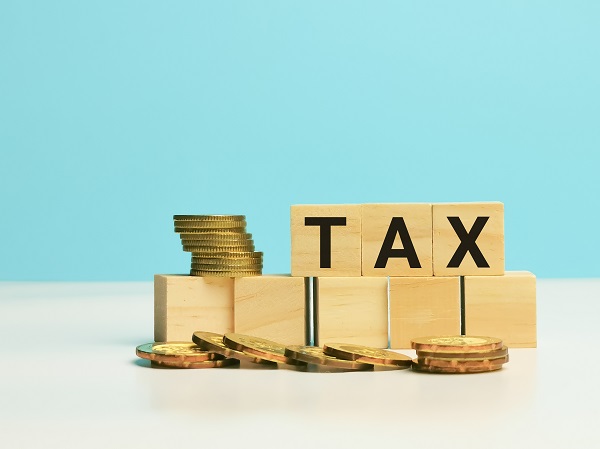What is Section 206(1H): TCS On Sale of Goods Under Finance Act

The Income Tax Act of 1961 introduced Tax Collected at Source (TCS) on the sale of goods from October 1 2020. Such a provision influences the invoicing system under Goods and Services Tax. Keep reading to get the details regarding TCS under Finance Act, 2020!
About TCS on Sale of Goods
The Finance Act, 2020, implemented Section 206C(1H) of the IT Act to update the provision related to TCS. According to this Section, a seller will have to deduct TCS on goods’ sale if the value of this sale goes beyond Rs. 50,00,000 in a particular fiscal year. While receiving such payment, TCS deduction will be applicable.
Terms and Conditions under Section 206C(IH)
The following are the requirements under this provision:
- This section is applicable to the seller whose total gross turnover goes above Rs. 10 crores in the FY preceding the fiscal year in which this sale is processed.
- Here, goods don’t include any export and goods covered under Section 206C(1G): TCS for foreign remittances; Section 206C(IF): TCS on motor vehicles’ sale and Section 206C(1): TCS on sale of scrap, forest produce, tendu leaves and alcohol.
- If a purchaser is a local authority, Trade Representation of Foreign State, Consulate, Legation, High Commission, Embassy, State/Central Government, then TCS deduction is not applicable.
- As per some other provisions of the IT Act, a purchaser can deduct TDS on the goods that he bought from a seller. For such transactions, a seller need not deduct TCS.
- This section doesn’t cover the import of goods in India.
Also Read
TCS on Sale of Goods with Examples
Section 206C(1H) has been in force since October 1 2020. Under this, a seller needs to deduct TCS @0.1% on the payment whose value goes beyond Rs. 50 lakh during a fiscal year. Owing to the COVID-19 pandemic, the TCS rate was minimised to 0.075% until March 31 2021.
Suppose Manav (seller) receives Rs. 70 lakh during a fiscal year. In this case, he will deduct TCS on Rs. 20 lakh (Rs. 70 lakh – Rs. 50 lakh).
Furthermore, let’s say Ravi (supplier) charged Tax Collected at Source in an invoice:
- Total value of the goods = Rs. 60,00,000
- GST at the rate of 18% = Rs. 10,80,000
- Summation = Rs. (60,00,000 + 10,80,000) = Rs. 70,80,000
- TCS on this value = Rs. (0.1% x 70,80,000) = Rs. 7,080
- Final invoice value = Rs. (70,80,000 + 7,080) = Rs. 7,087,080
Note that the limit of Rs. 50,00,000 is applicable for the entire fiscal year. Hence, if sellers get any payments from the buyers between April 1 2020 and September 30, 2020, the equivalent will be taken into account for computing the threshold of Rs. 50,00,000 for those buyers.
For instance, let’s say Jay (seller) gets a payment of Rs. 40 lakh from Manish (buyer) between April 2020 and September 2020. Again, he receives Rs. 15 lakh on October 10 2020. In this situation, a TCS deduction is applicable on Rs. 5,00,000 (Rs. 55 lakh – Rs. 50 lakh) at the rate of 0.075%.
Impact of TCS Provisions on E-Invoicing
The Government of India has introduced e-invoicing through a phased approach. E-invoicing mandates the reporting of any business-to-business invoice on the government website. The ultimate purpose is to mitigate tax evasion.
During the 3rd phase, the government covered all the organisations with turnover above Rs. 50 crore since April 1 2021. In the 4th phase, it included companies with a yearly turnover above Rs. 20 crore in any preceding years between FY 2017-18 and FY 2021-22.
As per the present e-invoicing mandate, no separate TCS provision exists under Section 206C(IH). When you generate your invoice reference number, you must include the TCS applicable in your invoice value under ‘other charges’. Furthermore, the GSTR-1 will automatically add the TCS amount included in your invoice value.
This recent TCS provision functions on a receipt basis. Thus, sellers need to collect this tax on advance payments received. Afterwards, it will be adjusted against the relevant invoice. If your invoice doesn’t cover the TCS, there’ll be no impact on the e-invoicing.
Final Word
Section 206C(IH) needs a seller to collect taxes when his/her gross receipts or total sales during the previous fiscal year go above Rs. 10 crore. In this case, if you’re purchasing goods whose price exceeds Rs. 50 lakh, be prepared for a TCS deduction on the same.
FAQs
Ans: As per CBDT’s Circular No. 17 (2020), there should be no Goods and Services Tax adjustments for computing Tax Collected at Source due to discounts or indirect taxes. The tax is subtracted on the receipt of consideration (not the actual sale).
Ans: Sales by SEZ (Special Economic Zone) units come under export. However, Tax Collected at Source will be applicable to them if payment from a purchaser goes above Rs. 50 lakh in a particular fiscal year.
Ans: Section 206C(IH) of the Income Tax Act, 1961 deals with TCS on the sale of goods. Hence, it doesn’t cover payments for the supply of services. That said, it considers the sale of services for computing the threshold of Rs. 1,00,00,000.
Ans: A supplier gets payment on the seventh day from the end of the month. All TCS collectors should file a TCS return (quarterly) by way of Form 27EQ. It contains details related to the tax collected during a specific quarter.
Ans: Yes, a buyer has to furnish his/her Aadhaar or PAN details as per TCS provisions. If he/she fails to do so, TCS @ 1% will be applicable on sale consideration. In this case, Section 206CC comes into force.
Disclaimer
This article is solely for educational purposes. Navi doesn't take any responsibility for the information or claims made in the blog.
Read More on Income Tax Act

Customer’s Feedback
No comments found.What is Form 26QB for TDS? How to Download and Submit it?
While purchasing a property, buyers are liable to pay various taxes. The Finance Act, 2013 made TDS... Read More »PF Withdrawal Rules 2023 – Rules, Documents Required and Types
EPF/PF Withdrawal Employees’ Provident Fund (abbreviated as EPF) is a popular retirement sav... Read More »Stamp Duty and Property Registration Charges in Delhi 2023
It is compulsory for property buyers in the Capital to pay stamp duty in Delhi during property regi... Read More »Income Tax Return – Documents, Forms and How to File ITR Online AY 2023-24
In India, it is mandatory for all taxpayers who earn more than the basic tax exemption limit to fil... Read More »What is Section 80CCD – Deductions for National Pension Scheme and Atal Pension Yojana
The Income Tax Act provides a number of deductions and tax benefits to taxpayers, so they can strat... Read More »Tax on Dividend Income: Sources, Tax Rate and TDS on dividend income
What are Dividends? Companies may raise funds for running their operations by selling equity. Th... Read More »Section 112A of Income Tax Act: Taxation on Long-Term Capital Gains
What is Section 112A? Section 112A of the Income Tax Act was announced in Budget 2018 to replace... Read More »Section 206AB of Income Tax Act: Eligibility And TDS Rate
Section 206AB was introduced in the Finance Bill 2021 as a new provision pertaining to higher deduc... Read More »What is a Credit Note in GST – Example, Format and Steps
A GST Credit Note is mandatory for any GST-registered supplier of goods or services. As a supplier,... Read More »Exemptions and Deductions Under Section 10 of Income Tax Act
What Is Section 10 of the Income Tax Act? Section 10 of the Income Tax Act, 1961 provides tax-sa... Read More »Section 57 of the Income-tax Act – Income from Other Sources
It is quite likely that many entities - individuals as well as businesses - have multiple sources o... Read More »What is Dearness Allowance? – Types, Calculation, and Current Rate
What is Dearness Allowance? Dearness Allowance Meaning - Dearness Allowance (DA) is an allowance... Read More »Top 10 Chit Fund Schemes in India in 2023
Chit funds are one of the most popular return-generating saving schemes in India. It is a financial... Read More »10 Best Gold ETFs in India to Invest in April 2023
Gold ETFs or Gold Exchange Traded Funds are passively managed funds that track the price of physica... Read More »10 Best Demat Accounts in India for Beginners in 2023
Creation of Demat accounts revolutionised the way trades were conducted at the stock exchanges. It... Read More »20 Best Index Funds to Invest in India in April 2023
What is an Index Fund? An index fund is a type of mutual fund or exchange-traded fund (ETF) that... Read More »Best Arbitrage Mutual Funds to Invest in India in April 2023
Arbitrage funds are hybrid mutual fund schemes that aim to make low-risk profits by buying and sell... Read More »10 Best SIP Plans in India to Invest in April 2023
What is SIP? SIP or Systematic Investment Plan is a method of investing a fixed amount in ... Read More »10 Best Corporate Bond Funds in India to Invest in April 2023
Corporate bond funds are debt funds that invest at least 80% of the investment corpus in companies ... Read More »10 Best Bank for Savings Account in India [Highest Interest Rate 2023]
Savings account is a type of financial instrument offered by several banks. It lets you safely depo... Read More »
































